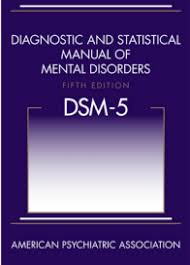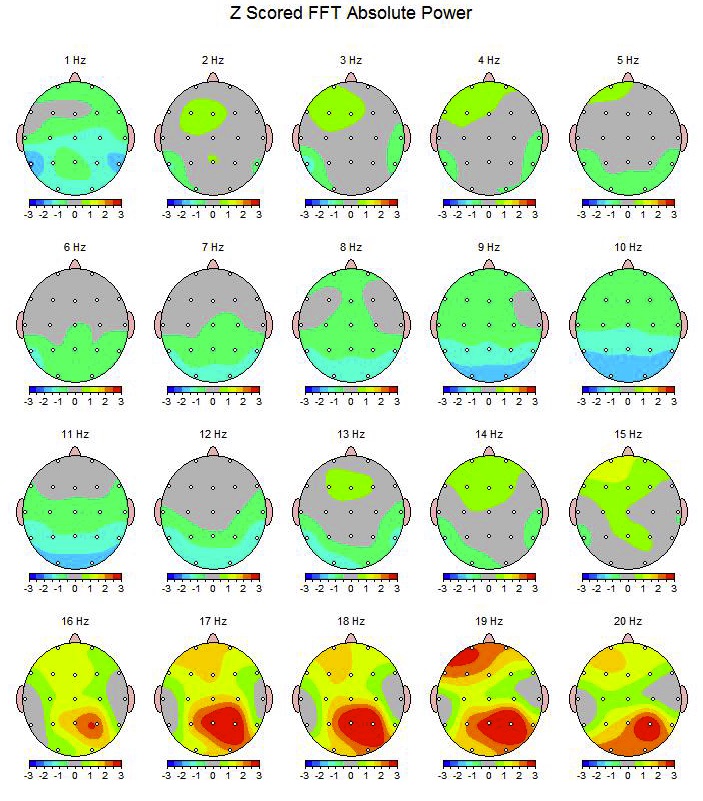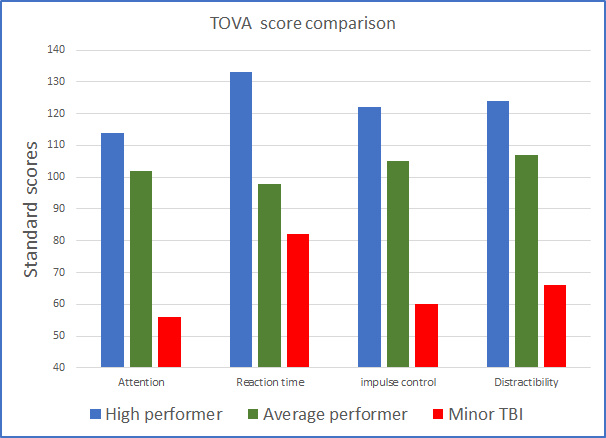ADHD Test, Symptoms & Causes
Hyperactivity is not at the core of an ADHD diagnosis, nor is the presence of another behavioural disorder. Many children with ADHD are well behaved and polite, and of normal or above average intelligence. A common symptom of ADHD in children is that they are inattentive and easily distracted. This distractibility can present in the form of fidgetiness, and/or a tendency to be impulsive and make mistakes. ADHD test is conducted to diagnose the type of ADHD in adults and children alike.
In the media, ADHD is often mischaracterised as being solely associated with hyperactivity, but this is not representative of the ADHD community. Due to this, parents with the inattentive subtype of ADHD are often reluctant to accept that their child, who has no behavioural challenges, meets diagnostic criteria.
Diagnosis of ADHD

In accordance with the Diagnostic and Statistical Manual of Mental Disorders (DSM-V), ADHD is first diagnosed through gaining a clinical history before the parent and/or child fills out behavioural questionnaires. The DSM-V, in all its iterations, was designed by the American Psychiatric Association to help prescribe psychiatric medication. The DSM-V was not developed to characterise the contributing factors and causes of mental health disorders. In many cases, a diagnosis will simply lead to prescription of medication for symptom management. All medications have the potential for side-effects, and do not offer the benefits of therapy.
ADHD is not a disease like diabetes or shingles, nor is it a disorder with a single known cause. Over the last 20 years, BNC has analysed the brain images of over 3000 children with ADHD, in collaboration with researchers from the Brain Sciences Institute at Swinburne University. Our research suggests that ADHD is simply a label for a range of behaviours for which there are many underlying causes. Some of these causes are easily identified, such nutrient deficiencies in a Western diet, whilst other causes require genetic testing to identify mutations that may cause cognitive abnormalities. With the help of specialised nutrients, these mutations can be overcome by up-regulating gene expression.
ADHD in Adults
Although we have focused on childhood ADHD here, BNC’s approach to diagnosing ADHD in adults is similar. We also find adults respond equally well to therapy.
ADHD Assessment in Adults & Children
According to the DSM-5, a diagnosis of ADHD applies to children and adults who consistently display certain behaviours over time.
Traditionally, ADHD is diagnosed if the child meets a characteristic behaviour. So broad is the list of behaviours in the DSM-V that it captures nearly all childhood problems. Children with attentional disorders range from polite, dreamy, and inattentive to hyperactive.
Science has yet to identify ‘the cause’ behind these different presentations, and it remains unlikely that a single cause for ADHD will ever be found. Over the years, several causal factors have been proposed. The wide range of symptoms present in ADHD suggest that ADHD is better characterised as a term which captures many underlying disorders. If ADHD constitutes many disorders, then it makes sense that there are such diverse behavioural manifestations.
The US summit on ADHD concluded that ADHD is best treated with a multidisciplinary approach. The Surgeon General urged practitioners from different disciplines to cooperate in ADHD diagnosis and therapy (including QEEG) so that people receive the best therapy options.
ADHD Tests for Assessment
Quantitative electroencephalography (QEEG).

Quantitative EEG (QEEG) is the statistical analysis of the electrical activity of the brain. It is a brain mapping tool used to evaluate differences in brain function compared to a database of people without difficulties. In the brain map image above, the colour black, and one colour gradation above and below on the scale, represent the normal range.
The hotter colours represent excesses of brain electrical activity and colder colours represent deficits. Some of these excesses and deficits are related to specific behavioural and learning difficulties, or mood disorders. QEEG enables the formulation of therapy options guided by these brain patterns, rather than simply relying on behavioural questionnaires.
Until recently, QEEG test was carried out mostly by neuroscientists in brain research and neurophysiology labs. Although QEEG is taught and used at many medical schools in the US, such as UCLA, Harvard, and New York University, it is not taught in Australian medical schools. It is, however, used at the Brain Sciences Institute at Swinburne University and other universities in Australia for research purposes. Few health professionals have training in the use of QEEG for clinical purposes. Since 1990, over 30,000 QEEG studies have been listed on the US National Library of Medicine Database, and over 95% of them are EEG studies using QEEG methods.
QEEG is useful in revealing the underlying abnormal brainwave patterns associated with ADHD and other disorders. QEEG can discriminate with more than 90% accuracy ADHD from learning disabilities and from typical activity. BNC uses Neuroguide software from Applied Neuroscience Inc. in St Petersburg, Florida, USA.
Test of Variables of Attention (T.O.V.A)

The TOVA is a computer administered continuous performance test which is widely used as a screening tool for ADHD. It is not a diagnostic tool. The TOVA is an objective method for assessing the effectiveness of medication for ADHD, without relying solely on parental/teacher reports and interviews. BNC offers the TOVA as a service for paediatricians to titrate prescription ADHD medication. Parents can ask their paediatrician for this test to be administered before medication is prescribed, so that the dosage is adjusted appropriately. Alternatively, BNC provides this service directly to families. The TOVA reduces the likelihood of under or over-medication. It ensures that the medication is optimum for the child. A computer-generated report is provided to the referring medical practitioner (or to the parents).
The TOVA scores below compare a child with ADHD who has a minor head injury (MTBI), caused by a fall off a bicycle, to an average or high performer on the test.
The TOVA requires students to press a micro switch whenever a ‘target’ appears on the screen, and to refrain from pressing it when a ‘non-target’ appears. The scores are compared to age-appropriate norms, which gives us useful objective information on four variables of attention:
- Ability to sustain attention and mental effort.
- Impulse control.
- Brain processing speed (reaction time).
- Distractibility (variability in the response times).
For more information on the TOVA TEST click here.
Wechsler Intelligence Scale for Children (WISC V)
The WISC tests general thinking and reasoning skills of students aged 6-16. The scores show how well a student compares to thousands of students, of the same age, from across the US and Australia. The highest possible score is 160, and the lowest possible score is 40. Half of all students will score less than 100, and half of all students will score more than 100. Scores from 90 to 109 are considered average. This test has three main scores: a Verbal IQ score, a Performance IQ score, and a Full-Scale IQ score. The Verbal IQ score indicates how well a student does on tasks that require listening to questions and giving spoken answers.
These tasks evaluate the skills required for understanding verbal information, thinking with words, and expressing thoughts in words. The Performance IQ score indicates how well a student does on tasks that require examining and thinking about design, pictures, puzzles and solving problems without using words. The tasks evaluate skills in solving nonverbal problems using hand-eye coordination and working quickly and efficiently with visual information. These skills are often referred to as visuo-spatial skills.
The Verbal and Performance scores are combined into the Full-Scale IQ score. The WISC-III Full-Scale score is a way to view a student's overall thinking and reasoning skills.
The WISC-III has 13 subscales which are used to assess various aspects of verbal and non-verbal (visuo-spatial) intellectual skills. The results give a good indication of which cognitive functions are lacking before a therapy plan is formed.
Red Cell Essential Fatty Acid Profile
Every cell in the body has a lipid membrane protecting its boundaries. The brain consists of 70% lipid and 40% of the brain is made up of the long chain Omega 3 EFAs (of the kind we get from fish). Studies consistently indicate that deficiencies of Omega 3 EFAs are associated with serious brain and systemic dysfunctions. Research demonstrates that Omega 3 EFAs are essential for brain function, and deficits in them are associated with psychological disorders such as ADHD, ASD, cardiovascular disease, diabetes, and cancer. The red cell Essential Fatty Acid Profile blood test reveals the composition of red cell fatty acids and identifies specific EFA deficiencies.
Omega 3 EFAs and Gut function
The gut cell wall (epithelium) is exposed to billions of organisms and toxins daily. The lipid membrane of each cell in the epithelium serves as a vital protective barrier. If the lipid membrane lacks Omega 3 fatty acids, protection fails and unfriendly organisms, irritants, and toxins, irritate the gut wall and can give rise to symptoms of IBS and Inflammatory Bowel Diseases. There are several other nutrients and systems involved that need to be considered.
Extended Faecal Microbiology Analysis (FMA)
Intestinal dysbiosis is a term used to describe an imbalance in the gut commensal (normally resident) microbiome. When the balance of the gut bacteria is thrown off, usually due to a diet high in sugars and refined carbohydrates, the gut contents become more acidic. This promotes the overgrowth of Streptococcus and undergrowth of e-Coli. BNC clinicians, in collaboration with Bioscreen Medical, have been observing gastrointestinal changes in the abnormal faecal tests of patients with IBS, as well as those with ASD and anxiety. These observations have enabled us to formulate effective therapy protocols, which have resulted in significant improvements, even the normalisation, of gut function in IBS sufferers.
This Bioscreen test, from a medical laboratory at Melbourne University, is used at BNC to determine the profile of gut commensals (normal communities of bacteria). It is the only commercially available test in the world that accurately estimates the populations of commensal bacteria. The process involves keeping the faecal sample refrigerated in an anaerobic pouch to ensure that no oxygen reaches the sample prior to its analysis. If this does not happen, anaerobic bacteria would die upon air exposure during transportation, whilst the aerobes would continue to reproduce. Therefore, the Bioscreen method is highly accurate. The bacteria are grown over 3 weeks and counted to estimate the bowel’s profile. This test is not the same as parasitology and pathogen tests which are used to look for pathogenic bacteria and parasites.
Assessing ADHD at BNC
An BNC, ADHD assessment begins with behavioural/observational assessment, followed by an investigation of the possible causes.
- Assessment of Attention Deficit/Hyperactivity Disorder: Behaviours are assessed to determine whether they are outside normal limits. This is a traditional assessment method that is based solely on the DSM-V behavioural criteria.
-
Assessment of metabolic and brain dysfunctions: This assessment takes a closer look at the brain to identify patterns that are likely to give rise to ADHD and other abnormal behaviours. This assessment is less common in general clinical practice and requires assessment by health professionals trained in: (a) Medicine (b) Psychology (c) Psychophysiology and Clinical Neuroscience and (d) Nutritional and Environmental medicine.
-
Neuroscientific and Nutritional Investigations: This assessment investigates brain function through neuroimaging (QEEG) and/or an exploration of diet, nutrition, and food sensitivities. Tests are administered to determine the possibility of chronic ear, nose, and throat infections, as well as recurrent abdominal upsets or metabolic dysfunctions that can cause cognitive and attention deficits.
Not everyone who is overly hyperactive, inattentive, or impulsive has ADHD. Most people, at some point in their life, have made mistakes, jumped from one task to another, been disorganised, and forgetful. Thus, an ADHD diagnosis requires a comprehensive assessment. At BNC, when assessing whether a person has ADHD, we ask several questions:
Are these behaviours excessive, long-term, and pervasive? Do they occur more often than in other people of the same age?
Are they a continuous problem or a response to a temporary situation? At home, the playground, or at school)?
It is only after we have answered these questions that the client’s behaviour is compared against the diagnostic criteria.
Subtypes & Symptoms of ADHD
According to the DSM-V, there are three subtypes of ADHD which will be discussed below:
1. ADHD, Predominantly Inattentive Subtype.
This subtype takes into consideration the person’s age and is diagnosed if symptoms of inattention have persisted for at least 6 months. A child with inattentive ADHD may not pay attention to details or make careless mistakes. This child may have difficulty sustaining attention in tasks and play and may listen when spoken to directly. Often this child does not follow requests, complete schoolwork, and chores. They may have organisational difficulties or be forgetful – losing necessary things like pencils and books. They may be reluctant to engage in tasks that require sustained mental effort. Family life could be filled with arguments about homework.
2. ADHD, Predominantly Hyperactive-Impulsive Subtype.
This subtype is diagnosed if there are symptoms of hyperactivity-impulsivity along with fewer symptoms of inattention.
Hyperactivity symptoms
Symptoms include frequent fidgetiness with hands and/or feet or squirming when required to sit still. This child is likely to have difficulty playing or engaging in activities quietly. They may be constantly on the go or talk excessively. Often this child gets up from their seat in class or in other situations where remaining seated is expected. They may run and climb at inappropriate times. As they move into adolescence and adulthood, these ‘active’ behaviours often subside, but their restlessness remains.
Impulsivity symptoms
The impulsive child blurts out answers before the question has been finished and has difficulty waiting their turn. Consequently, they interrupt and disrupt games and conversations.
3. ADHD, Combined Subtype.
This subtype is when the symptoms of both inattention and hyperactivity-impulsivity co-occur.
Caution. Because we all show some of these behaviours across the lifetime, the DSM-V contains specific guidelines for determining whether ADHD is present. The behaviours must appear early in life, before age 7, and continue for at least 6 months. The behaviours must be more frequent and/or severe than others of the same age. The behaviours must cause significant functional impairment in at least two areas of the person’s life (school, work, home or social life).
Behaviours that are Not Necessarily ADHD
There are medical, metabolic, and psychological factors that are associated with attention deficits, hyperactivity, and inappropriate behaviours, without meeting criteria for an ADHD diagnosis.
ADHD should only be diagnosed when all other causal factors have been excluded.
The following conditions would NOT QUALIFY for a diagnosis of ADHD. Some of these conditions result in temporary symptoms, whilst others result in more chronic (long-term) symptoms.
- Attention lapses during absence (petit mal) seizures.
- Underachievement at school due to a learning disability.
- A middle ear infection or grommets that may reduce hearing sensitivity.
- Central Auditory Processing Disorder.
- Visual Processing Disorder.
- Dyslexia.
- Disruptive or unresponsive behaviours due to childhood depression or anxiety.
- Anxiety and chronic fears that make a child seem overactive, quarrelsome, impulsive, or inattentive.
- An over-active or under-active thyroid.
- Undiagnosed and/or untreated diabetes.
- A child who becomes overactive and easily distracted after the death of a family member or friend.
- A child who has experienced any traumatic loss or fearful experience. They may be dealing with unresolved grief and/or emotional regulation difficulties or live with a family member who is physically or emotionally abusive or neglectful.
- A chronic middle ear infection or mild asthma that make a child seem distracted/uncooperative.
- Worry and distress.

It is hard to imagine a child trying to focus on their maths class when they are unsure about their safety at home or feeling unloved. They may show signs of stress and mood disturbance – not ADHD. Perhaps they have a learning disability and cannot read and/or write at an age-appropriate level. This child may be inattentive and cause trouble in class, but this not ADHD.
Or maybe the work is too hard or too easy, leaving the child frustrated or bored?
Often a change in class structure or adjusted lessons will improve the child’s attention.
Although these children all need help to stay on track at school, they may not have ADHD.
During development, many children are inattentive, hyperactive, or impulsive, but do not have ADHD. Pre-schoolers have a lot of energy and run everywhere they go, but this does not necessarily mean they are hyperactive. Instead, it is better to provide them with appropriate outlets to express their inquisitiveness and energy. Similarly, many adolescents go through phases where they are messy, disorganised, and question (or even reject) authority.
Other Disorders that can be Co-morbid with (Accompany) ADHD?
One of the difficulties in diagnosing ADHD with a single questionnaire is that ADHD is often co-morbid. QEEG, which examines brain function, can differentiate between disorders which have behavioural overlap. The following are a few examples:
1. Learning Difficulties:
Many children with ADHD also have a specific learning disability (LD), which means that they have trouble mastering language or certain academic skills (e.g., reading, writing or maths). ADHD is not in itself a learning disability. However, because it can interfere with concentration and attention, ADHD can make it just as hard to achieve at school as a learning disability.
Learning disabilities are diagnosed when the person’s achievement on individually administered and standardised tests in reading, mathematics, or written expression is substantially below that of which is expected for their age, schooling, and level of intelligence. Learning disabilities significantly interfere with academic achievement, and/or life skills.
2. PANDAS AND PANS

PANDAS is an acronym for a condition called Paediatric Autoimmune Neuropsychiatric Disorder Associated with Streptococcus (PANDAS). Current research suggests that Tourette’s and OCD can, in some cases, result from the effect of the body's own immune system antibodies attacking parts of the brain. PANDAS syndrome onset usually occurs following an Ear, Nose or Throat (ENT) infection from Group A Beta Haemolytic Streptococcus (GABHS). GABHS antibodies can damage parts of the brain resulting in a range of behavioural disorders: OCD, ODD, Tourette’s, ADHD, and psychosis. People with Tourette’s have TICS and other involuntary movements, such as eye blinks, facial twitches, or complex body movements. Others grimace, shrug, sniff, or bark out words. Swearing can also be a manifestation of Tourette’s. Often Tourette’s symptoms are accompanied by symptoms of OCD.
PANS is a more recent name for an autoimmune response to a wide range of organisms that can include bacteria, mycoplasma, or viruses. The symptoms are episodic, meaning that they appear or get worse when there is an infection, such as a sore throat or chest infection. They often settle down until the next episode. Sometimes the brain tissues never completely recover leaving permanent symptoms. PANDAS/PANS is well researched by scientists at the NIH (USA).
Few doctors, paediatricians and psychiatrists understand PANS and PANDAS. As with any new concept, the scientific establishment first refuses to acknowledge it. It may take decades before the concept is widely accepted. For more information, see our PANDAS/PANS WEBPAGE.
3. Oppositional Defiant Disorder and Conduct Disorder

Nearly 50% of children with ADHD have oppositional defiant disorder (ODD). Children with ODD may overreact or lash out when feeling threatened or challenged. They may be stubborn, have angry outbursts, or act belligerently/defiantly. ODD can worsen, causing serious conduct disorders. Children with ODD are at risk of getting in trouble at school, and with the police. They may take unsafe risks, break laws, steal, set fires, destroy property, and drive recklessly. They must receive help before their early developmental behaviours leads to serious problems.
4. Mood Disorders

Depression
Many children with ADHD, predominantly younger children, and girls, have mood disorders. About one-fourth of all children feel anxious. They experience tremendous worry, tension, or uneasiness, even when there is nothing to fear. Because these feelings are scarier, stronger, and more frequent than normal fears, they can affect thought and behaviour. Similarly, depression goes beyond ordinary sadness. Depressed children may feel so down that they feel hopeless and unable to perform tasks. Depression can disrupt sleep, appetite, and the ability to think.
Because mood disorders and attention disorders often go hand in hand, every child with ADHD should be assessed for co-morbid anxiety and depression.
Of course, not all children with ADHD have a co-morbid disorder. Nor do all people with learning disabilities and Tourette’s syndrome, have ADHD. However, when disorders do co-occur, a combination of problems can complicate a person’s life. Comprehensive assessments ensure of all the child’s presenting behaviours are identified.
Multidisciplinary Assessment tools At the Behavioural Neurotherapy Clinic
BNC takes a holistic, multidisciplinary approach to investigate medical and neurophysiological conditions. BNC’s approach may include pathology tests, as well as assessment measures from psychology, neuroscience, and psychophysiology. These assessments guide treatment protocols that are individually tailored to the causal factors which underpin the difficulties.
The following are some of BNC’S assessment measures:
At your first consult at BNC, surveys will go in your online clinic portal for completion prior to your next appointment. Following an initial interview with a psychologist, assessments will be recommended based on you or your child’s history and current presentation.
A detailed and up-to-date history, including family details, is taken to establish relevant factors that may contribute to the presenting problem. Clients fill out a multiple-choice questionnaire to collect relevant family health, pregnancy, birth, infancy, and early childhood history.
We do this to capture the duration of the behaviours, their effect on family and school life, as well as screen for other disorders.
Summary of Assessments for ADHD, only as required:
- QEEG to assess brain patterns and differentiate ADHD from other disorders.
- The TOVA (Test of Variables of Attention) continuous performance task.
- WISC-III IQ test to assess aspects of intellectual functioning.
- Red cell Essential Fatty Acids (blood test) to test whether EFA counts are normal.
- Extended Faecal Microbiology (a faecal sample) to assess the bowel’s bacterial profile.
- IgG food allergy panel (a blood test) to test for autoimmune antibodies to certain foods.
- Intestinal Permeability test (a urine test) to test for Leaky Gut.
- Mineral hair analysis (a hair sample) to test for deposits of heavy metals.
- Blood tests for nutritional and/or other toxic elements.



